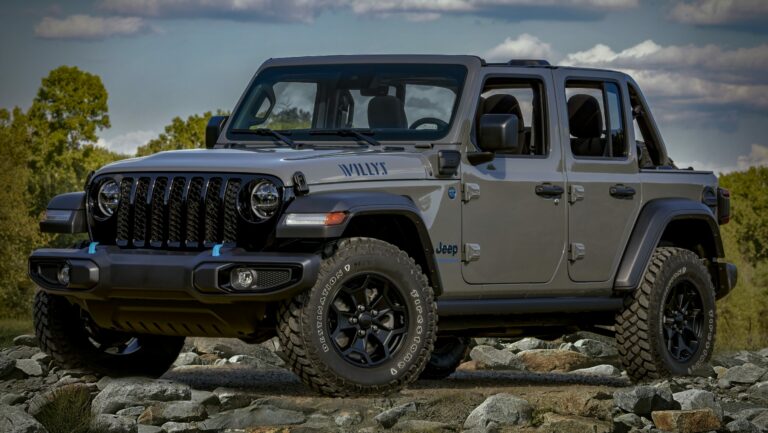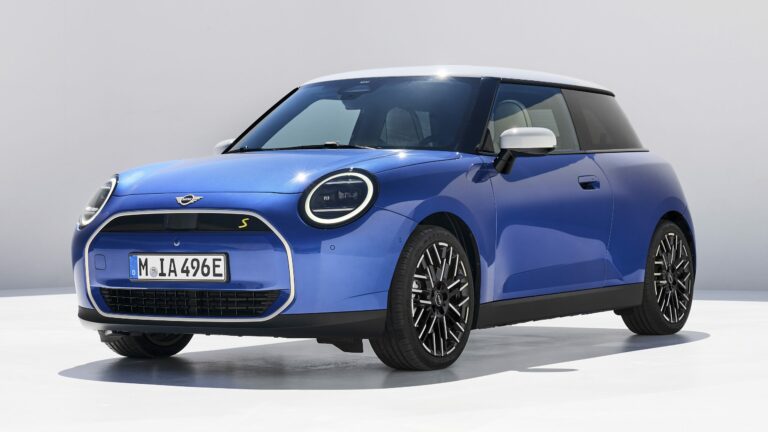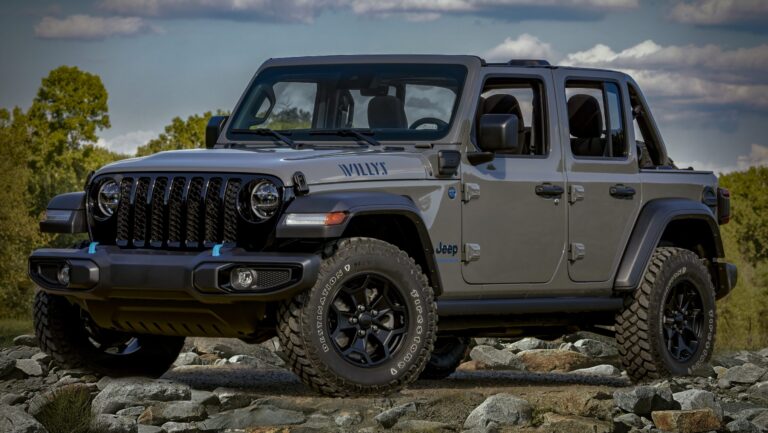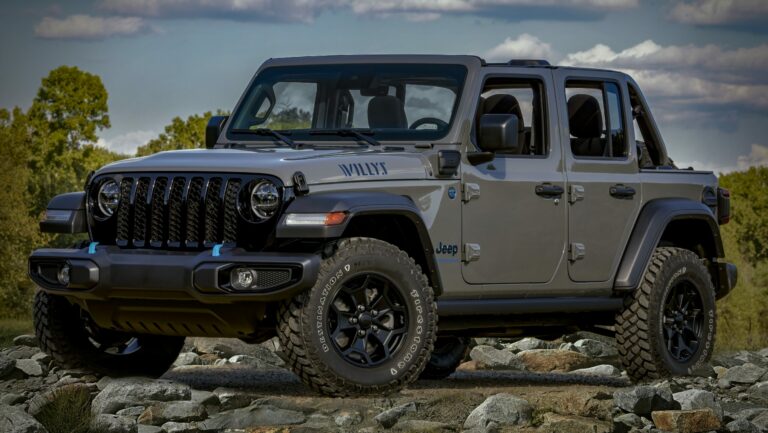Ford GPA Amphibious Jeep For Sale: Your Comprehensive Guide to Owning a Piece of History
Ford GPA Amphibious Jeep For Sale: Your Comprehensive Guide to Owning a Piece of History jeeps.truckstrend.com
The roar of an engine on land, the gentle churn of a propeller in water – few vehicles can seamlessly transition between these two realms with the historical gravitas of the Ford GPA. Affectionately known as the "Seep" (short for Sea Jeep), this remarkable amphibious vehicle, born from the urgent demands of World War II, represents a unique blend of automotive and marine engineering. Today, the opportunity to find a Ford GPA Amphibious Jeep for sale is more than just a transaction; it’s a chance to acquire a tangible piece of military history, a functional oddity, and a truly engaging project for the dedicated enthusiast.
This comprehensive guide is designed for anyone considering adding a Ford GPA to their collection, whether you’re a seasoned military vehicle collector, a history buff, or simply captivated by the sheer ingenuity of this wartime marvel. We will delve into its origins, explore its enduring appeal, provide crucial advice on what to look for when buying, discuss the realities of ownership, and offer insights into the current market for these extraordinary machines.
Ford GPA Amphibious Jeep For Sale: Your Comprehensive Guide to Owning a Piece of History
A Deep Dive into the Ford GPA’s History and Design
The Ford GPA’s story begins in the crucible of World War II, when Allied strategists recognized the critical need for light, agile, amphibious vehicles to support beach landings, river crossings, and general utility operations where bridges might be destroyed or nonexistent. Following the success of the standard Willys MB and Ford GPW Jeeps, the US military sought an amphibious variant capable of operating effectively on both land and water.
Ford was tasked with this ambitious project, leveraging their experience with the "regular" Jeep. The result was the GPA, which entered production in 1942. Its design was revolutionary yet challenging. Unlike the boxy, open-top land-based Jeeps, the GPA featured a distinctive boat-like hull, giving it buoyancy. It retained the familiar 60 hp Ford "Go-Devil" engine and 4×4 drivetrain of its land-based brethren, but added a power take-off (PTO) driven propeller at the rear for water propulsion and a small rudder for steering in the water. A bilge pump was also integrated to remove any water that might enter the hull.
Despite its innovative design and a production run of over 12,000 units, the GPA faced a mixed reception during the war. It was heavier and slower on land than the standard Jeep, and its low freeboard meant it struggled in rough seas, making it less ideal for open ocean assaults like D-Day. However, it proved invaluable in calmer waters, such as river crossings in Europe and island-hopping campaigns in the Pacific, where its ability to ferry troops and supplies from landing craft to shore was critical. Many GPAs were also supplied to Allied nations, particularly the Soviet Union, under the Lend-Lease program, where they saw extensive use. Post-war, many were sold as surplus, finding new lives as civilian utility vehicles, fishing boats, or simply fascinating relics.
Why Buy a Ford GPA Today? The Appeal of an Amphibious Classic
The allure of a Ford GPA Amphibious Jeep for sale extends far beyond its historical significance. For many, it represents the pinnacle of military vehicle collecting, offering a blend of rarity, unique functionality, and undeniable charisma.
- Historical Significance: Owning a GPA means possessing a tangible piece of WWII history. Each vehicle carries stories of innovation, conflict, and the ingenuity that helped shape the modern world. They are living museums, sparking conversations and educating new generations.
- Unique Capabilities: This is arguably the GPA’s most compelling feature. The ability to drive from land directly into a lake, river, or calm coastal water, navigate it, and then drive back out, is a truly unparalleled experience. It transforms a simple vehicle into an adventure machine, perfect for unique outings and demonstrations.
- Collectibility and Rarity: Compared to the tens of thousands of standard Jeeps produced, the GPA’s production numbers were relatively low, and even fewer survive in complete, operational condition. This scarcity contributes to its desirability among collectors and can potentially enhance its long-term value.
- Hobbyist Engagement: For those who love to tinker, restore, and maintain classic vehicles, a GPA offers a deeply rewarding challenge. Its dual nature means mastering both automotive and rudimentary marine mechanics, expanding your skill set and knowledge.
- The "Wow" Factor: Whether at a car show, a military vehicle event, or simply cruising down the road (or across a pond), the GPA is an instant head-turner. Its distinctive appearance and amphibious capabilities guarantee attention and admiration.

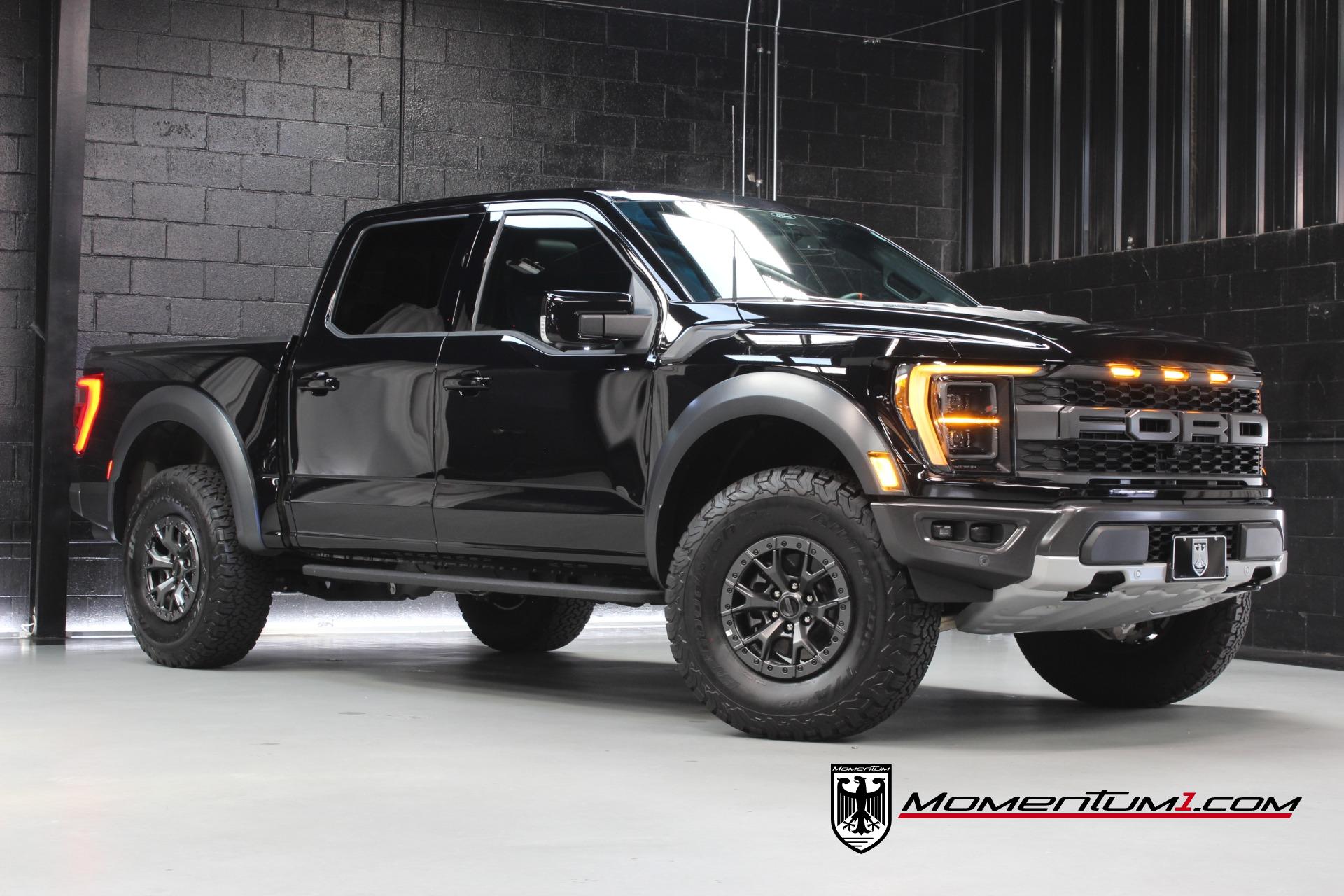
What to Look For When Buying a Ford GPA: A Buyer’s Guide
Acquiring a Ford GPA Amphibious Jeep for sale requires careful consideration and a thorough inspection. These are not ordinary vehicles, and their unique design necessitates a specific checklist.
Condition Categories:
Ford GPAs typically fall into a few broad categories, each with different price points and levels of required work:
- Project/Barn Find: Often incomplete, non-running, and requiring extensive restoration. These are the most affordable upfront but demand the most significant investment in time, money, and parts.
- Running/Driving but Needs Work: Functional on land, potentially in water (with caution), but has numerous mechanical or cosmetic issues. A good option for those who want to use it while they restore it.
- Good Condition (Driver Quality): Fully operational on land and water, well-maintained, but might show signs of age or minor imperfections. Ready for immediate enjoyment.
- Fully Restored/Concours Quality: Meticulously restored to original specifications, often indistinguishable from a factory-fresh unit. These are the rarest and command the highest prices, often appearing at auctions or through specialist dealers.

Key Inspection Points:
- Hull Integrity (Critical!): This is paramount for amphibious operation.
- Rust and Corrosion: Inspect every inch of the steel hull, especially the bottom, wheel wells, and internal compartments. Look for deep pitting, holes, and patches. Poorly repaired patches can leak.
- Dents and Damage: Significant dents can compromise structural integrity and water-tightness.
- Seals and Gaskets: Check around all openings (engine cover, propeller shaft, rudder shaft, drain plugs) for condition. Deteriorated seals mean leaks.
- Engine and Drivetrain:
- Engine: The "Go-Devil" engine is robust, but check for oil leaks, smoke, strange noises, and overall condition. Many GPAs have had engine rebuilds or replacements over the decades.
- Transmission and Transfer Case: Test all gears, including the low range and 4×4 engagement. Listen for grinding or excessive play.
- Propeller Drive: Engage the PTO for the propeller. Check the shaft, universal joints, and the propeller itself for damage or excessive wear.
- Propeller and Rudder Mechanism:
- Propeller: Ensure it’s not bent, chipped, or missing blades. Damage can lead to vibration and inefficient propulsion.
- Rudder: Check for smooth operation and play in the linkage. The rudder is essential for steering in water.
- Bilge Pump: A functional bilge pump is non-negotiable for water operation. Test it. Ensure the intake screen is clear.
- Suspension and Brakes: Similar to a standard Jeep, but ensure all components are solid and free of excessive rust from water exposure.
- Electrical System: Check all lights, gauges, and the starter. Many GPAs have been converted from 6V to 12V for easier maintenance and accessory use.
- Originality vs. Modifications: Decide what’s important to you. Highly original vehicles command a premium, but some modifications (like 12V conversion, modern fuel pumps) can enhance usability. Be wary of non-period modifications that detract from historical accuracy.
- Documentation: A clear title is essential. Any historical documentation, military records, or restoration logs significantly add value and provide peace of mind.
Where to Find Them:
- Specialized Military Vehicle Dealers: Companies like Legacy Classic Trucks, Army Jeep Parts, or individual dealers often have restored or project GPAs.
- Auctions: Major automotive auctions (Mecum, RM Sotheby’s, Barrett-Jackson) occasionally feature high-end restored examples.
- Online Forums and Classifieds: Dedicated military vehicle forums (e.g., G503.com) and online marketplaces are excellent places to find private sales.
- Military Vehicle Shows: Attending these events can lead to direct connections with owners looking to sell.
Ownership and Maintenance: Keeping Your Seep Afloat (Literally!)
Owning a Ford GPA Amphibious Jeep for sale is a commitment that goes beyond the initial purchase. Proper maintenance is key to preserving its unique capabilities and ensuring its longevity.
- Routine Automotive Maintenance: Much of the engine, transmission, and drivetrain maintenance is similar to a standard Ford GPW or Willys MB Jeep. Regular oil changes, lubrication, and fluid checks are crucial.
- Pre-Launch Checks: Before entering water, a meticulous inspection is necessary.
- Check all drain plugs and access panels are securely closed.
- Inspect propeller and rudder for damage.
- Verify bilge pump operation.
- Ensure all seals (especially around the propeller shaft and transmission output) are intact and not leaking.
- Post-Water Care: This is vital to prevent rust and corrosion.
- Thoroughly flush the entire vehicle with fresh water, especially the hull interior, underside, and any areas exposed to saltwater.
- Allow the vehicle to dry completely. Opening drain plugs and internal access panels can aid drying.
- Lubricate all moving parts, particularly the propeller shaft and rudder linkages.
- Parts Availability: While many mechanical components (engine, transmission parts, axles) are shared with the more common GPW/MB Jeeps and are relatively available, GPA-specific parts (hull components, propeller, rudder, bilge pump, unique sheet metal) can be exceedingly rare and expensive. Reproduction parts exist for some items, but not all.
- Storage: Store your GPA in a dry, well-ventilated area to prevent rust. If storing for extended periods, consider stabilizing fuel and disconnecting the battery.
- Insurance and Registration: Insuring an amphibious vehicle can be more complex than a standard car. Consult with specialist insurers who understand classic military vehicles. Registration laws vary by state/country; ensure you comply with both road and potential marine regulations.
The Cost of Entry: Understanding Ford GPA Pricing
The price of a Ford GPA Amphibious Jeep for sale varies dramatically based on its condition, originality, history, and the seller. It’s a niche market, and prices reflect the rarity and specialized nature of these vehicles.
Factors Influencing Price:
- Condition: As outlined above, a non-running project will be significantly cheaper than a fully restored, show-quality example.
- Originality: Vehicles retaining their original components, especially unique GPA features, tend to command higher prices.
- Documentation: Clear title, service history, and any provenance linking it to its wartime service can add value.
- Location: Shipping an amphibious vehicle can be costly, so proximity to the seller can influence the final price.
- Market Demand: While consistently sought after, market trends can cause minor fluctuations.
Estimated Price Range Table (USD):
| Condition Category | Description | Estimated Price Range (USD) | Key Considerations |
|---|---|---|---|
| Project/Barn Find | Incomplete, non-running, significant rust, major components missing or damaged. Requires full restoration of hull, drivetrain, and marine systems. | $15,000 – $35,000 | Lowest entry cost, but highest potential for restoration expenses (often exceeding purchase price). Expect to source many rare GPA-specific parts. Not suitable for immediate use. Requires significant mechanical and bodywork skills. |
| Running/Driving (Needs Work) | Runs and drives on land, but may have issues with hull integrity, marine propulsion, or significant cosmetic flaws. Engine may need overhaul, propeller/rudder systems need attention. | $35,000 – $65,000 | Usable on land, potentially in calm water with caution. Offers a starting point for a rolling restoration. Be prepared for substantial mechanical and bodywork. Hull water-tightness should be a primary concern. Parts sourcing will still be a significant factor. |
| Good Condition (Driver Quality) | Fully operational on land and water. Engine, drivetrain, and marine systems function correctly. Presentable appearance but may have minor cosmetic imperfections, non-original paint, or some wear. | $65,000 – $100,000 | Ready for immediate enjoyment and events. Represents a solid investment for enthusiasts who want to use their GPA without major restoration work. Still benefits from ongoing maintenance and minor improvements. Check for proper marine sealing and bilge pump function. |
| Fully Restored/Concours Quality | Meticulously restored to original factory specifications, often with historical documentation. Flawless paint, fully functional systems, highly original components. Suitable for museum display or competitive showing. | $100,000 – $180,000+ | Top tier of the market. Represents a significant investment of time and money in restoration. Offers the highest level of authenticity and presentation. These are rare and typically found through specialist dealers or high-end auctions. Minimal work required post-purchase, primarily maintenance to retain condition. |
Note: These are estimated ranges and can fluctuate based on specific vehicle condition, provenance, and market demand.
Frequently Asked Questions (FAQ) about Ford GPAs For Sale
Q1: Can I really drive a Ford GPA in water?
A: Yes, absolutely! The Ford GPA was designed for amphibious operation. However, it’s crucial that the hull is watertight, the propeller and rudder systems are functional, and the bilge pump is operational. Always perform pre-launch checks and operate in calm, shallow waters initially.
Q2: Are parts hard to find for a Ford GPA?
A: Some parts are. Many mechanical components (engine, transmission, axles) are shared with the more common Ford GPW and Willys MB Jeeps, making them relatively available. However, GPA-specific parts like the hull sections, unique sheet metal, propeller, rudder, and specialized amphibious components can be rare and expensive to source, often requiring specialist suppliers or custom fabrication.
Q3: How fast is a Ford GPA on land and in water?
A: On land, a GPA is slower than a standard Jeep due to its weight. Expect top speeds around 40-45 mph (65-70 km/h). In water, it’s quite slow, typically achieving speeds of 3-5 mph (5-8 km/h). It’s built for utility and transport, not speed.
Q4: Is a Ford GPA street legal?
A: Generally, yes, if it has working lights, brakes, and a valid title. However, specific regulations for amphibious vehicles on public roads can vary by state or country. It’s advisable to check with your local Department of Motor Vehicles or equivalent authority.
Q5: Is buying a Ford GPA a good investment?
A: While historical military vehicles can appreciate in value, buying a GPA should primarily be a passion-driven purchase. Restoration costs can be substantial, often exceeding the initial purchase price, especially for project vehicles. While top-tier restored examples do hold significant value, the enjoyment of owning and operating such a unique piece of history is often the main return on investment.
Q6: What’s the difference between a GPA and a DUKW?
A: The Ford GPA (Seep) is a small, four-wheel-drive amphibious Jeep, roughly the size of a standard Jeep but with a boat hull. The DUKW (often pronounced "Duck") is a much larger, six-wheel-drive amphibious truck based on the GMC CCKW, designed for heavy transport of troops and supplies. They served different roles due to their size and capacity.
Conclusion: Embracing the Amphibious Adventure
The pursuit of a Ford GPA Amphibious Jeep for sale is a journey into a unique segment of automotive history. These vehicles are more than just modes of transport; they are engineering marvels, historical artifacts, and gateways to unparalleled adventures. While acquiring and maintaining a GPA presents its own set of challenges, the rewards are immeasurable.
From the thrill of driving directly into a lake, to the pride of preserving a piece of World War II heritage, owning a "Seep" is a deeply engaging experience. Whether you seek a museum-quality restoration or a robust driver for weekend excursions, thorough research, careful inspection, and a clear understanding of the commitment involved will ensure that your acquisition of a Ford GPA is a truly rewarding endeavor, allowing you to keep this amphibious legend afloat for generations to come.


